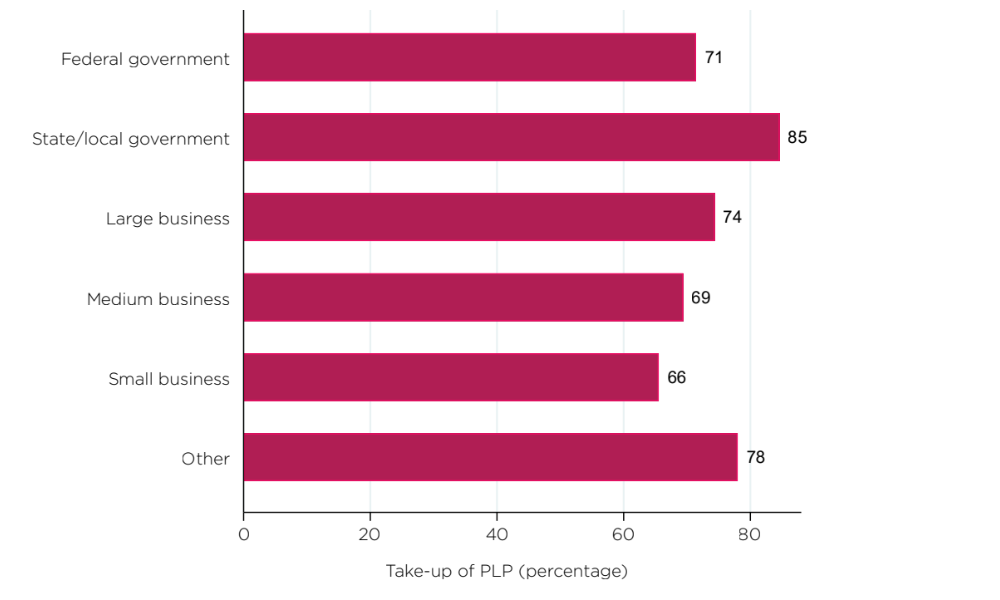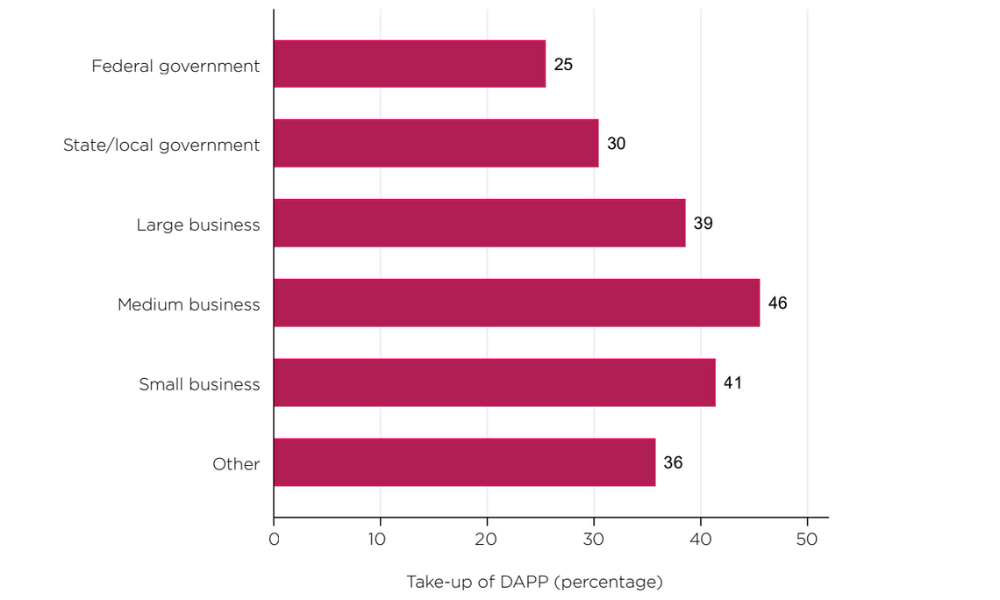
New report shows utilisation rates on Australia's paid parental leave before recent reforms

A new report has revealed the take-up rates on government-funded paid parental leave among eligible parents before reforms were introduced last year.
The report from the Australian Institute of Family Studies (AIFS) revealed that 74% of eligible mothers used their Parental Leave Pay (PLP) and 40% of eligible fathers used their Dad and Partner Pay (DAPP).
These findings, which were gathered by linking the 2021 Census data with Australian Tax Office data, aimed to explore how parents were using government-funded financial support designed to give them time off work to care for their newborns.
"There were differences in take-up of PLP and DAPP by personal and family characteristics," the report found.
"There was lower take-up among parents who were not in an opposite-sex couple relationship, parents with poor English language proficiency, lowest-income parents, parents with a disability (as indicated by needing assistance with core activities) and Aboriginal and/or Torres Strait Islander parents."
Jennifer Baxter, Executive Manager, Families, Society and Lifecourse Research, said government-funded payments are a "critical support for parents without employer-funded leave to look after their baby while staying connected to work."
"Without the support of government-funded parental leave, it's likely that many wouldn't stay connected to work, and that may lead to long career breaks which makes it harder to re-enter the workforce later," she said in a statement.
According to the report, some 74% of working mothers used the PLP before reforms were introduced.
The highest take-up rates were recorded in state and local government jobs and in large businesses. On the other hand, the smallest take-up rates were recorded in medium and small businesses.

Source: The Australian Institute of Family Studies
By sector, the highest PLP uptake was recorded in the education, arts, and recreation industry (79%). This is followed by the professional, scientific, and tech sector (78%), and then by the personal services, repairs, public safety/admin sector (77%).
The lowest uptake was recorded in the construction sector (56%), as well as the construction, support services, and food services sector (61%).
"We see the importance of the programme in the high proportion of mothers who were likely in jobs without employer-funded leave using PLP early – like hospitality and small businesses," Baxter said.
Meanwhile, the report found that 40% Of eligible fathers used the government-funded DAPP, with the uptake highest in medium businesses (46%).
The lowest uptake was recorded in federal government jobs, as well as state/local government jobs (30%).
By sector, uptake was the highest at technical and trades industry (47%), while it was lowest at the community/personal services industry (34%).

Source: The Australian Institute of Family Studies
The findings come before DAPP was absorbed into the government's current Paid Parental Leave reforms, which aims to grant working parents up to 26 weeks of paid leave by 2026.
Baxter said they expect the uptake of the updated leave entitlements to be similar for mothers.
"However, fathers can now have a share of Paid Parental Leave, rather than their payment being separate," Baxter said. "It will be important to see how their take-up changes with this significant policy shift."
Starting July, the government will add two weeks of paid parental leave until its length reaches 26 weeks by 2026.
Prime Minister Anthony Albanese called the expansion the "biggest boost to Paid Parental Leave" since its inception.
"Our policy will give families more leave and more flexibility, to ensure the system works in a way that's best for them," he previously said.